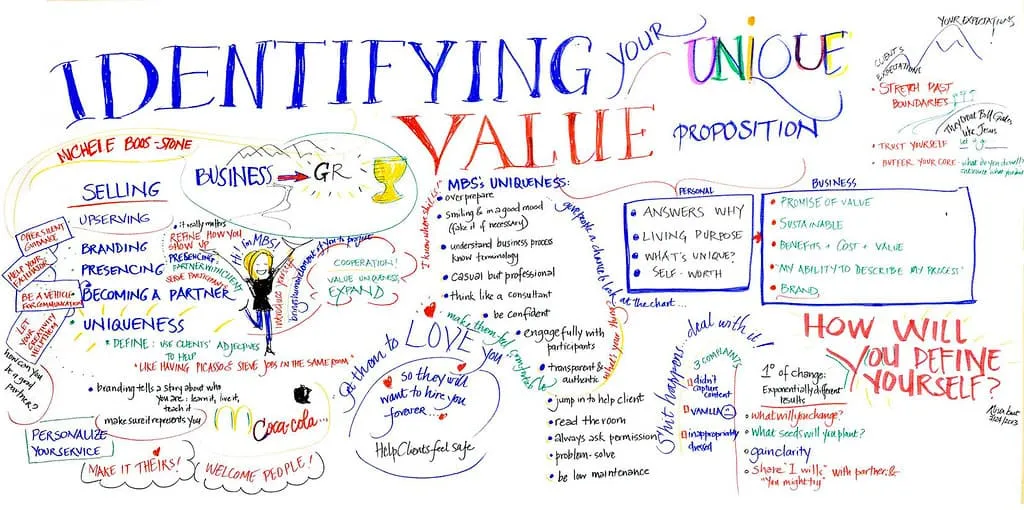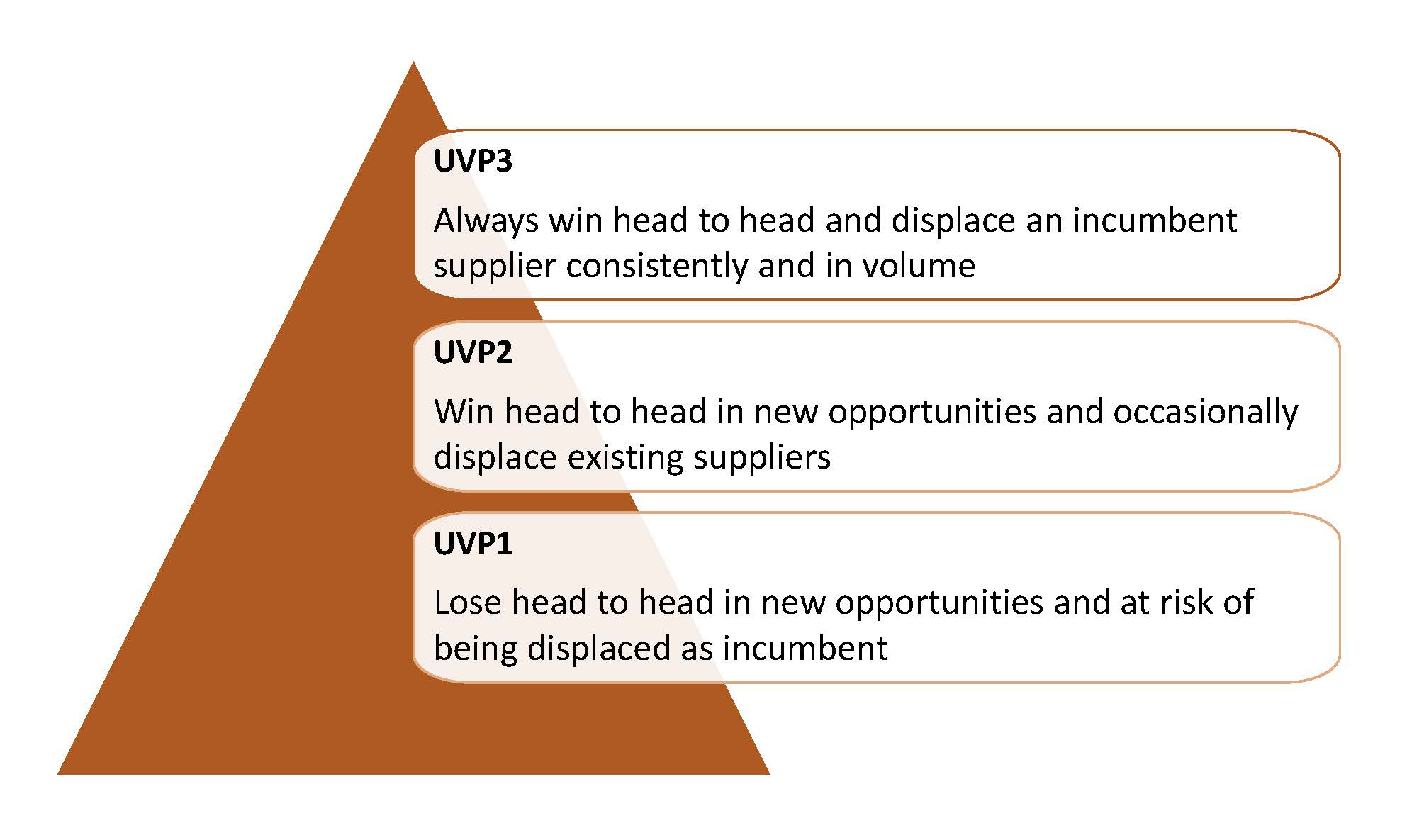The Power of Differentiation in a Crowded Market
In today’s competitive business landscape, standing out from the crowd is crucial for success. A well-crafted unique value proposition (UVP) can be a key differentiator, helping businesses attract and retain customers, increase brand loyalty, and drive revenue growth. UVP development is an essential process that enables companies to clearly articulate their unique strengths and benefits, setting them apart from competitors.
A unique value proposition is more than just a marketing slogan or tagline. It’s a statement that communicates the unique benefits and value that a business offers to its customers. A strong UVP should be concise, clear, and compelling, resonating with the target audience and differentiating the business from its competitors. By developing a UVP, businesses can create a foundation for their marketing and sales efforts, ensuring that their message is consistent and effective across all channels.
The importance of UVP development cannot be overstated. In a crowded market, businesses that fail to differentiate themselves risk being lost in the noise. A well-crafted UVP can help businesses break through the clutter, establishing a strong brand identity and building a loyal customer base. Moreover, a UVP can serve as a guiding principle for business decision-making, ensuring that all efforts are aligned with the company’s unique strengths and benefits.
By investing in UVP development, businesses can reap numerous benefits, including increased brand recognition, improved customer engagement, and enhanced revenue growth. A strong UVP can also help businesses to establish a competitive advantage, setting them apart from competitors and establishing a leadership position in their market. Whether you’re a startup or an established business, developing a unique value proposition is essential for success in today’s competitive market.
So, how can businesses develop a UVP that resonates with their target audience? The process begins with a deep understanding of the target market, including their needs, pain points, and motivations. By conducting market research and gathering feedback, businesses can gain valuable insights into what sets them apart from their competitors and what unique benefits they offer to their customers. With this information, businesses can craft a UVP that is concise, clear, and compelling, setting them up for success in the market.
Understanding Your Target Audience: The Key to a Relevant UVP
Developing a unique value proposition (UVP) that resonates with your target audience is crucial for business success. However, many businesses struggle to create a UVP that truly speaks to their customers’ needs and pain points. The key to overcoming this challenge lies in understanding your target audience inside and out.
To develop a UVP that resonates with your target audience, you need to conduct market research and gather feedback from your customers. This can be done through surveys, focus groups, and one-on-one interviews. By gathering this information, you can gain valuable insights into your customers’ needs, pain points, and motivations.
One effective way to gather feedback is to use online analytics tools to track your customers’ behavior and preferences. This can help you identify patterns and trends that can inform your UVP development process. Additionally, you can use social media to engage with your customers and gather feedback in real-time.
Another important step in understanding your target audience is to analyze customer data. This can include demographic information, purchase history, and customer feedback. By analyzing this data, you can identify key trends and patterns that can help you develop a UVP that resonates with your target audience.
For example, a company that sells outdoor gear may find that their target audience is primarily composed of young adults who value sustainability and eco-friendliness. By understanding this, the company can develop a UVP that emphasizes their commitment to environmental responsibility and sustainability. This can help the company stand out in a crowded market and attract customers who share their values.
By taking the time to understand your target audience, you can develop a UVP that truly resonates with them. This can help you build a loyal customer base, increase brand loyalty, and drive revenue growth. Remember, a well-crafted UVP is the key to differentiating your business in a crowded market and attracting customers who are looking for a unique solution to their needs.
In the next section, we will explore the step-by-step process of developing a unique value proposition that resonates with your target audience. We will provide tips and examples on how to identify your unique strengths, understand your competitors, and craft a clear and concise message that sets your business apart.
How to Develop a Unique Value Proposition that Resonates
Developing a unique value proposition (UVP) that resonates with your target audience requires a strategic approach. Here’s a step-by-step guide to help you create a UVP that sets your business apart from the competition.
Step 1: Identify Your Unique Strengths
Start by identifying what sets your business apart from others in your industry. What are your unique strengths, skills, and expertise? What values do you bring to the table that others don’t? Make a list of your unique strengths and use them as the foundation for your UVP.
Step 2: Understand Your Competitors
Research your competitors and understand what they’re offering to their customers. Identify gaps in the market and areas where you can differentiate yourself. Analyze your competitors’ strengths and weaknesses to determine how you can position your business as a better alternative.
Step 3: Craft a Clear and Concise Message
Use your unique strengths and competitive analysis to craft a clear and concise message that communicates your UVP. Your message should be easy to understand, memorable, and compelling. Avoid using jargon or technical terms that might confuse your target audience.
Example of a Successful UVP:
Warby Parker’s UVP is a great example of a successful UVP. Their message is clear and concise: “Try 5 frames at home for free, and get a 30-day money-back guarantee.” This UVP resonates with their target audience because it addresses a specific pain point (trying on glasses can be a hassle) and offers a unique solution (trying frames at home for free).
What Makes a UVP Effective?
A UVP is effective when it resonates with your target audience and sets your business apart from the competition. A good UVP should be:
Unique: Your UVP should be unique and differentiate your business from others in your industry.
Relevant: Your UVP should be relevant to your target audience and address a specific pain point or need.
Memorable: Your UVP should be
The Role of Brand Storytelling in UVP Development
Brand storytelling is a powerful tool in unique value proposition (UVP) development. By creating a narrative that showcases your brand’s values, mission, and personality, you can create an emotional connection with your target audience and make your UVP more memorable.
A brand story is more than just a tagline or slogan. It’s a narrative that communicates the essence of your brand and what sets it apart from others. A good brand story should be authentic, relatable, and engaging, and should resonate with your target audience.
So, how can you use brand storytelling in UVP development? Here are a few tips:
1. Identify your brand’s values and mission. What drives your business? What values do you want to communicate to your customers?
2. Develop a narrative that showcases your brand’s personality. What makes your brand unique? What sets it apart from others?
3. Use storytelling techniques to make your UVP more memorable. Use vivid imagery, metaphors, and anecdotes to bring your UVP to life.
Example of a Successful Brand Story:
Patagonia’s brand story is a great example of how storytelling can be used in UVP development. Their story is centered around their mission to “build the best product, cause no unnecessary harm, use business to inspire and implement solutions to the environmental crisis.” This narrative resonates with their target audience and communicates their values and personality.
Benefits of Brand Storytelling in UVP Development:
1. Creates an emotional connection with your target audience.
2. Makes your UVP more memorable and engaging.
3. Communicates your brand’s values and personality.
4. Differentiates your brand from others in the market.
By incorporating brand storytelling into your UVP development process, you can create a narrative that resonates with your target audience and sets your brand apart from others. Remember, a good brand story should be authentic, relatable, and engaging, and should communicate the essence of your brand.
Creating a UVP that Aligns with Your Business Goals
A well-crafted unique value proposition (UVP) is essential for businesses to stand out in a competitive market. However, a UVP that doesn’t align with your business goals and objectives can be ineffective and even counterproductive. In this section, we’ll discuss the importance of ensuring that your UVP aligns with your business goals and provide tips on how to evaluate and refine your UVP over time.
Why Aligning Your UVP with Business Goals is Important
Your UVP should be designed to drive business outcomes, such as increasing revenue, improving customer engagement, and enhancing brand loyalty. If your UVP doesn’t align with your business goals, it may not be effective in achieving these outcomes. For example, if your business goal is to increase revenue, your UVP should be focused on communicating the value of your product or service in terms of cost savings or increased efficiency.
How to Evaluate Your UVP’s Effectiveness
To evaluate the effectiveness of your UVP, you need to track key metrics such as customer engagement, conversion rates, and revenue growth. You can use data analytics tools to track these metrics and gain insights into how your UVP is performing. Additionally, you can conduct customer surveys and gather feedback to understand how your UVP is resonating with your target audience.
Refining and Adjusting Your UVP Over Time
Your UVP is not a static entity; it should evolve over time as your business goals and objectives change. To refine and adjust your UVP, you need to regularly review and assess its effectiveness. You can use the data and insights gathered from tracking key metrics to identify areas for improvement and make adjustments to your UVP accordingly.
Example of a UVP that Aligns with Business Goals
Let’s say a company’s business goal is to increase revenue by 20% within the next quarter. Their UVP could be focused on communicating the value of their product in terms of cost savings and increased efficiency. For example, “Our product can help you save up to 30% on your energy bills and increase your productivity by 25%.” This UVP aligns with the company’s business goal and is designed to drive revenue growth.
Benefits of Aligning Your UVP with Business Goals
1. Increased revenue growth
2. Improved customer engagement
3. Enhanced brand loyalty
4. Better alignment with business objectives
By ensuring that your UVP aligns with your business goals and objectives, you can create a powerful tool for driving business outcomes and achieving success in a competitive market.
Common Mistakes to Avoid in UVP Development
Developing a unique value proposition (UVP) is a crucial step in differentiating your business from the competition. However, many businesses make common mistakes that can render their UVP ineffective. In this section, we’ll highlight some of the most common mistakes to avoid in UVP development and provide tips on how to create a more effective UVP.
Mistake #1: Being Too Vague
A UVP that is too vague or generic will not resonate with your target audience. To avoid this mistake, make sure your UVP is specific, clear, and concise. Use language that is easy to understand and avoid using jargon or technical terms that may confuse your audience.
Mistake #2: Trying to Appeal to Everyone
Trying to appeal to everyone is a common mistake in UVP development. Instead, focus on identifying your target audience and crafting a UVP that speaks directly to their needs and pain points. This will help you create a more effective UVP that resonates with your audience.
Mistake #3: Neglecting to Test and Refine Your UVP
Many businesses neglect to test and refine their UVP, which can lead to a UVP that is ineffective or even counterproductive. To avoid this mistake, make sure to test your UVP with your target audience and refine it based on their feedback.
Example of a UVP that Avoids Common Mistakes
Let’s say a company’s UVP is “We offer the best customer service in the industry.” This UVP is too vague and generic, and it doesn’t speak directly to the needs and pain points of the target audience. A more effective UVP might be “We offer personalized customer support to help you achieve your goals.” This UVP is specific, clear, and concise, and it speaks directly to the needs and pain points of the target audience.
Benefits of Avoiding Common Mistakes in UVP Development
1. Increased effectiveness in differentiating your business from the competition
2. Improved resonance with your target audience
3. Increased conversion rates and revenue growth
4. Better alignment with business goals and objectives
By avoiding common mistakes in UVP development, you can create a more effective UVP that resonates with your target audience and drives business outcomes.
Measuring the Success of Your UVP
Developing a unique value proposition (UVP) is just the first step in creating a successful marketing strategy. To truly understand the effectiveness of your UVP, you need to measure its success. In this section, we’ll discuss the importance of measuring the success of your UVP and provide tips on how to track key metrics and use data to refine and improve your UVP over time.
Why Measuring UVP Success is Important
Measuring the success of your UVP is crucial to understanding its effectiveness in driving business outcomes. By tracking key metrics such as customer engagement, conversion rates, and revenue growth, you can gain insights into how your UVP is resonating with your target audience and make data-driven decisions to refine and improve it.
Key Metrics to Track
When measuring the success of your UVP, there are several key metrics to track. These include:
1. Customer engagement: Track metrics such as website traffic, social media engagement, and email open rates to understand how your UVP is resonating with your target audience.
2. Conversion rates: Track metrics such as lead generation, sales, and customer acquisition to understand how your UVP is driving business outcomes.
3. Revenue growth: Track metrics such as revenue, profitability, and customer lifetime value to understand the financial impact of your UVP.
How to Use Data to Refine and Improve Your UVP
Once you have collected data on your UVP’s performance, you can use it to refine and improve your UVP over time. Here are a few tips:
1. Analyze customer feedback: Use customer feedback to understand what is working and what is not working with your UVP.
2. Identify areas for improvement: Use data to identify areas where your UVP can be improved, such as messaging, targeting, or creative assets.
3. Test and iterate: Use data to test and iterate on different versions of your UVP, such as messaging, creative assets, or targeting.
Example of a Successful UVP Measurement Strategy
Let’s say a company develops a UVP that focuses on the benefits of their product, such as “Our product can help you save time and increase productivity.” To measure the success of this UVP, the company tracks key metrics such as website traffic, lead generation, and sales. Based on the data, the company refines and improves their UVP over time, such as by adding more specific language or emphasizing different benefits.
Benefits of Measuring UVP Success
1. Improved understanding of UVP effectiveness
2. Data-driven decision making
3. Increased customer engagement and conversion rates
4. Improved revenue growth and profitability
By measuring the success of your UVP and using data to refine and improve it over time, you can create a more effective marketing strategy that drives business outcomes and helps you achieve your goals.
Evolution of Your UVP: Staying Relevant in a Changing Market
A unique value proposition (UVP) is not a static entity; it should evolve over time to remain relevant in a changing market. As customer needs and market trends shift, your UVP should adapt to stay ahead of the competition and continue to resonate with your target audience.
Why UVP Evolution is Important
A UVP that remains stagnant can become less effective over time, leading to decreased customer engagement and revenue growth. By regularly reviewing and refining your UVP, you can ensure that it remains relevant and continues to drive business outcomes.
How to Stay Ahead of the Competition
To stay ahead of the competition, you need to stay informed about market trends and customer needs. Here are a few tips:
1. Conduct regular market research: Stay up-to-date on the latest market trends and customer needs by conducting regular market research.
2. Gather customer feedback: Gather feedback from your customers to understand their needs and pain points.
3. Analyze customer data: Analyze customer data to understand their behavior and preferences.
How to Adapt Your UVP to Shifting Customer Needs and Market Trends
Once you have gathered insights from market research, customer feedback, and customer data, you can adapt your UVP to shifting customer needs and market trends. Here are a few tips:
1. Refine your messaging: Refine your messaging to better resonate with your target audience.
2. Update your creative assets: Update your creative assets, such as images and videos, to better reflect your UVP.
3. Adjust your targeting: Adjust your targeting to better reach your target audience.
Example of a Successful UVP Evolution
Let’s say a company develops a UVP that focuses on the benefits of their product, such as “Our product can help you save time and increase productivity.” However, as the market shifts and customer needs change, the company refines their UVP to focus on the benefits of their product in a specific industry, such as “Our product can help you save time and increase productivity in the manufacturing industry.” This refined UVP better resonates with the target audience and drives business outcomes.
Benefits of UVP Evolution
1. Increased relevance in a changing market
2. Improved customer engagement and conversion rates
3. Increased revenue growth and profitability
4. Better alignment with business goals and objectives
By regularly reviewing and refining your UVP, you can ensure that it remains relevant and continues to drive business outcomes in a changing market.





